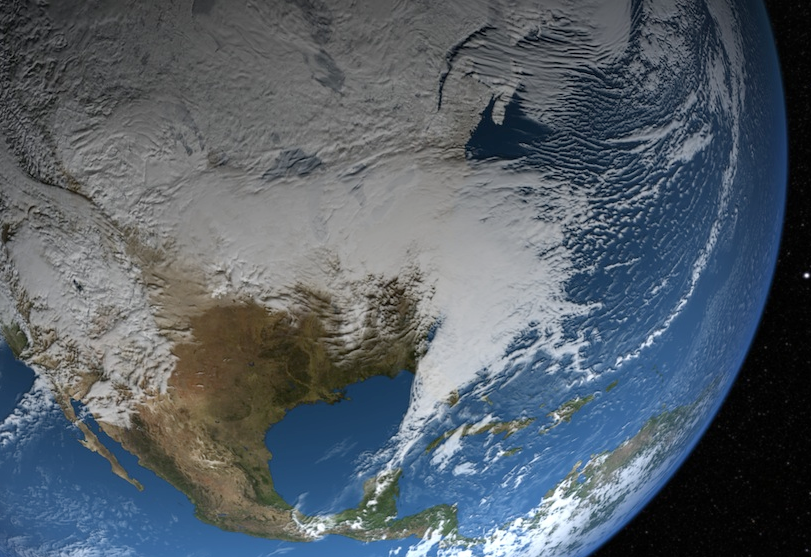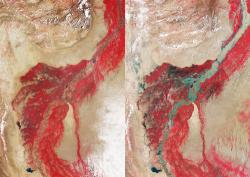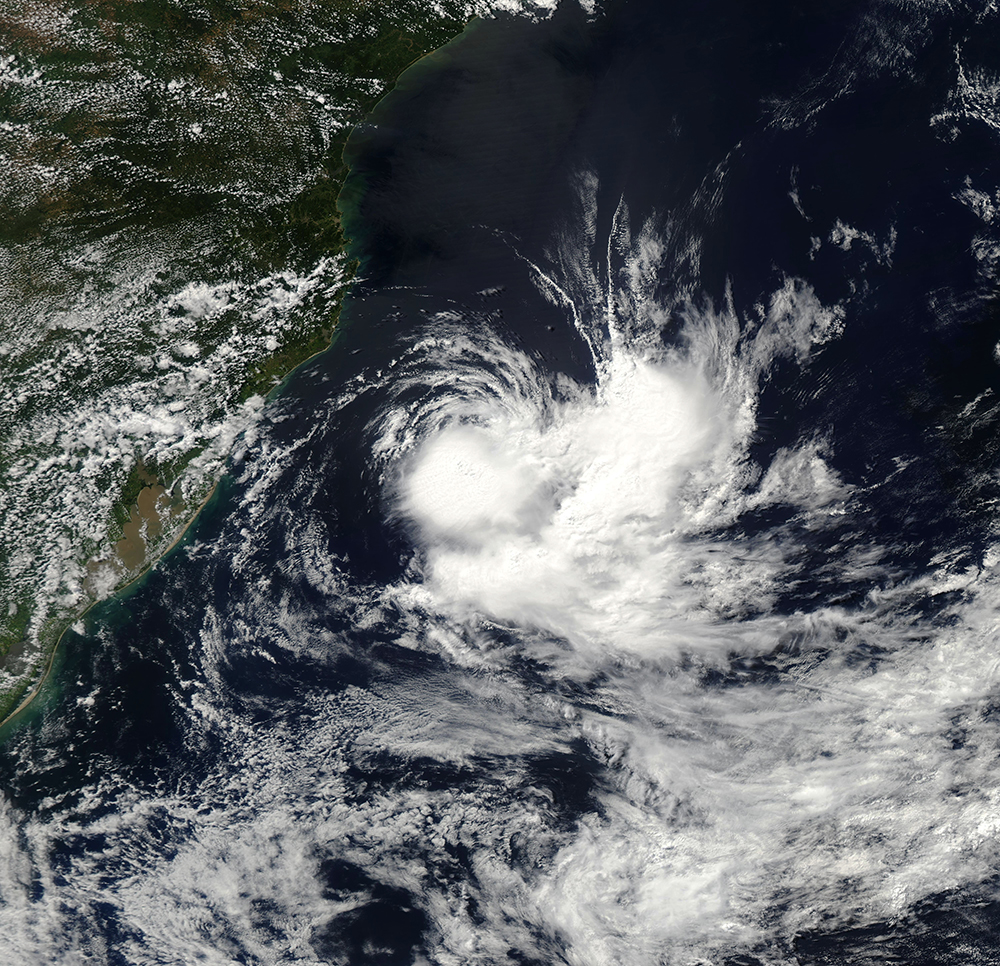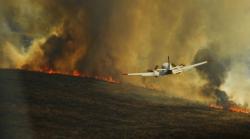Examples of Extreme Weather Events
2009–2010 Eastern United States “Snowmageddon”
According to meteorologist Dr. Jeff Masters, a “bizarre upside-down” wintertime Arctic circulation in the atmosphere was the “most extreme configuration in 145 years of record keeping.” A high-pressure center with clockwise winds replaced the normal low-pressure center with a counter-clockwise airflow. As a result, frigid Arctic air flooded the eastern United States and dumped over 2 feet of snow from Philadelphia to D.C. while warm air moved into Canada and caused “the warmest and driest winter on record.” There was so little snow on the ground for the Vancouver winter Olympics that Canada was forced to bring in snow by truck for the event.
2010 Russian Heat Wave and Fires
“Russia’s meteorological service says the 50-day heat wave in Central Russia was the worst weather-caused natural disaster in the northern hemisphere in 2010. On average, the year was the hottest since at least 1891, when records were first kept” (RT.com/TV-Novosti, 2011). According to the Center for Research on the Epidemiology of Disasters (CRED’s) EM-DAT Website, over 55,000 people died in the 2010 Russian heat wave, which was compounded by raging forest fires near Moscow, the capital city.
2010 Northern Pakistan Floods
The Russian drought and fires were accompanied by the floods in Pakistan, which were the worst in at least 80 years. A NASA research study has found “that the same large-scale meteorological event — an abnormal Rossby wave [part of the jet stream] — sparked extreme heat and persistent wildfires in Russia as well as unusual downstream wind patterns that shifted rainfall in the Indian monsoon region and fueled heavy flooding in Pakistan” (Science Daily, 2011).
CRED reports that the July 2010 death toll in the Pakistan floods was lower than for the major flood in 1950. However, in terms of the number of people affected (20,359,496) and the damage ($9,500,000, in U.S. dollars), the flood of 2010 was the worst in Pakistan’s history.
2010 South Atlantic Rare Tropical Storm
The U.S. Naval Research Laboratory began tracking a rare South Atlantic subtropical cyclone designated 90Q on March 9, 2010. On March 10, the storm intensified, and it was upgraded to a tropical storm. On March 13, it was given the name Anita. Including Anita, there have been just a handful of documented tropical storms in the South Atlantic. And although Anita’s formation was very unusual, in 2004 Hurricane Catarina was the “first documented hurricane to ever occur in the South Atlantic basin” (Braun, 2008). Tropical and subtropical storms rarely form in the South Atlantic basin due to a combination of strong wind shear air currents and cool sea temperatures. Between 1957 and 2007, there were just 92 documented subtropical storms in the South Atlantic.
2010–2011 Texas’s Worst Drought and Fire Season in Recorded History
Between the fall of 2010 (the beginning of the wildfire season) and September 1, 2011, Texas had 16,368 fires, with nearly 3.5 million acres (14,163.99 square kilometers) having burned. These fires were sparked by what Texas State Climatologist John Nielsen-Gammon described as the worst drought in Texas over a 12-month period in the state’s history. According to the National Climate Data Center, July 2011 was the hottest month ever recorded (since records began being kept back in 1895). The Texas Plant and Soil Lab blog (2011) reported that crops had failed, ranchers were selling off their “skin-and-bones” cattle herds, and 1,400 homes burned in the Bastrop fires alone. It went on to describe the situation as “events of Biblical proportions.”





